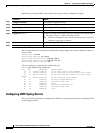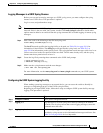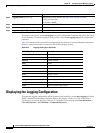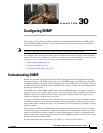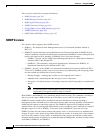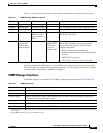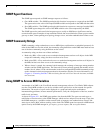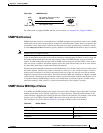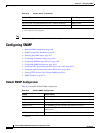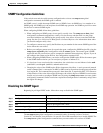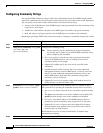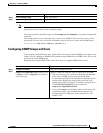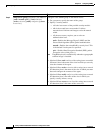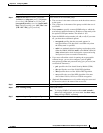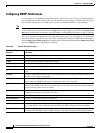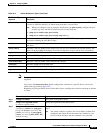
30-6
Catalyst 2960 and 2960-S Switch Software Configuration Guide
OL-8603-09
Chapter 30 Configuring SNMP
Configuring SNMP
Note The switch might not use sequential values within a range.
Configuring SNMP
• Default SNMP Configuration, page 30-6
• SNMP Configuration Guidelines, page 30-7
• Disabling the SNMP Agent, page 30-7
• Configuring Community Strings, page 30-8
• Configuring SNMP Groups and Users, page 30-9
• Configuring SNMP Notifications, page 30-12
• Setting the CPU Threshold Notification Types and Values, page 30-15
• Setting the Agent Contact and Location Information, page 30-16
• Limiting TFTP Servers Used Through SNMP, page 30-16
• SNMP Examples, page 30-17
Default SNMP Configuration
Table 30-4 shows the default SNMP configuration.
Tunnel 5078–5142
Physical (such as Gigabit Ethernet or SFP
2
-module interfaces) 10000–14500
Null 14501
1. SVI = switch virtual interface
2. SFP = small form-factor pluggable
Table 30-3 ifIndex Values (continued)
Interface Type ifIndex Range
Table 30-4 Default SNMP Configuration
Feature Default Setting
SNMP agent Disabled
1
.
1. This is the default when the switch starts and the startup configuration does not have any snmp-server global configuration
commands.
SNMP trap receiver None configured.
SNMP traps None enabled except the trap for TCP connections (tty).
SNMP version If no version keyword is present, the default is Version 1.
SNMPv3 authentication If no keyword is entered, the default is the noauth (noAuthNoPriv)
security level.
SNMP notification type If no type is specified, all notifications are sent.



